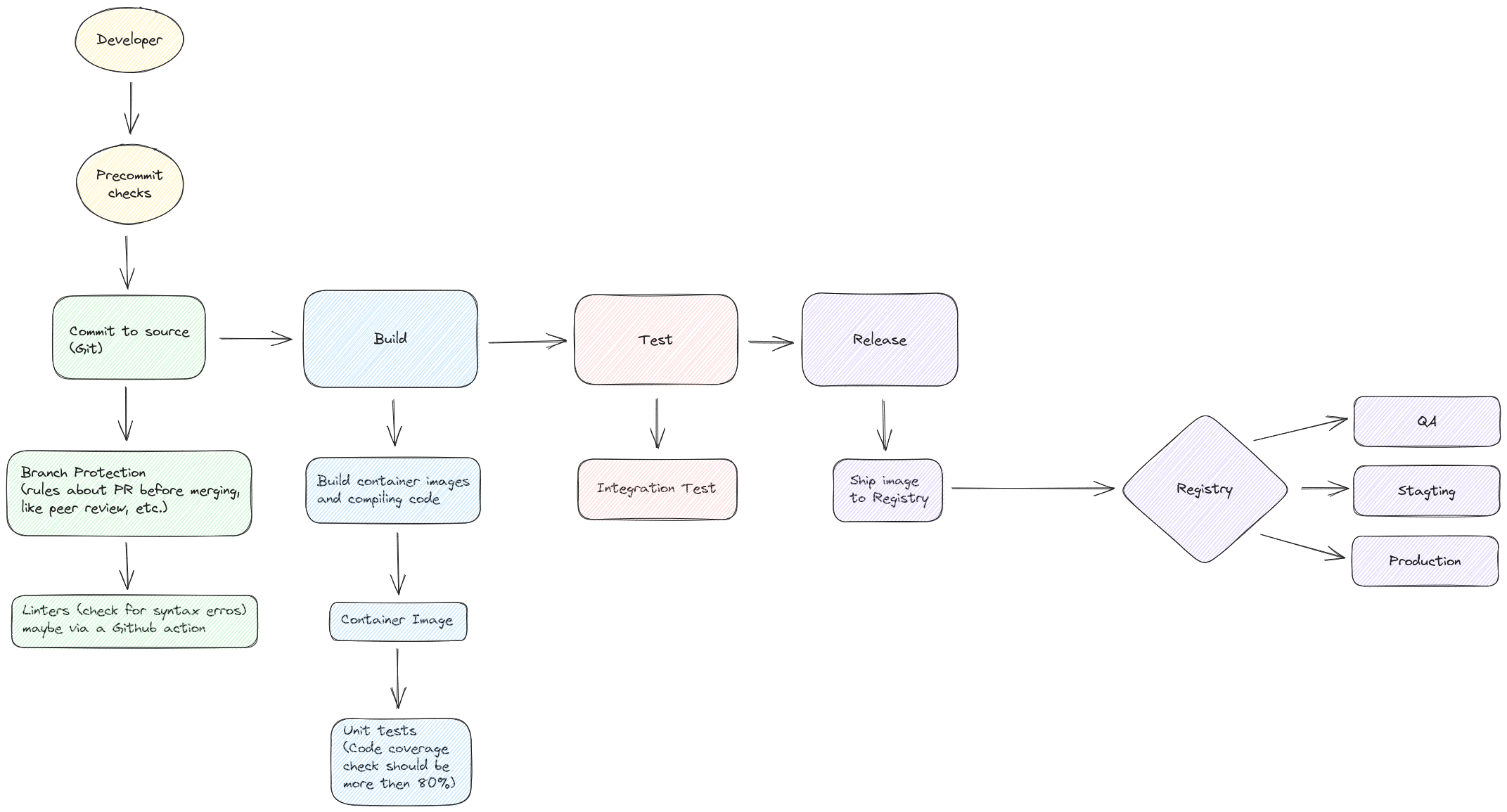How to Design a Modern CICD Pipeline

Designing a modern CI/CD pipeline involves multiple steps and tools that integrate seamlessly to automate the process. Below is a general outline of how you can set up each stage of the CI/CD pipeline:
-
Version Control System (VCS) Setup (Git):
- Create a central repository for your project.
- Configure branch protection rules to enforce code quality and security standards.
- Integrate linters and other static analysis tools to ensure that code pushed to the repository meets the defined coding standards.
-
Build Automation:
- Use a build tool to automate the build process.
- Configure a build server to trigger builds automatically upon code changes.
- Incorporate containerization tools to build container images for your application.
-
Automated Testing:
- Implement unit tests, integration tests, and end-to-end tests as part of the testing phase.
- Use testing frameworks to automate the testing process.
- Configure the CI/CD pipeline to execute tests automatically to ensure the quality of the codebase.
-
Release Management:
- Utilize a container registry to store your container images.
- Implement a continuous delivery strategy to automate the deployment process to various environments such as QA, staging, and production.
- Use tools like Kubernetes, Docker Swarm, or AWS ECS for container orchestration and deployment.
-
Monitoring and Feedback:
- Integrate monitoring tools like Prometheus, Grafana, or ELK stack to monitor the application’s performance and health.
- Set up alerts and notifications to keep the team informed about any issues or failures in the pipeline.
- Collect and analyze metrics to continuously improve the CI/CD process.
-
Security Integration:
- Implement security scanning tools to identify and address security vulnerabilities in the codebase.
- Integrate security checks into the CI/CD pipeline to ensure that only secure and compliant code gets deployed.
By following these steps and utilizing the appropriate tools, you can build a robust and efficient CI/CD pipeline that streamlines the software development and deployment process. Always remember to iterate and improve your pipeline continuously to adapt to changing requirements and best practices in the industry.